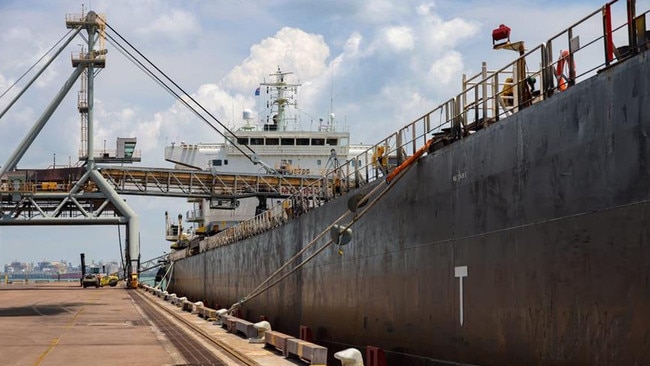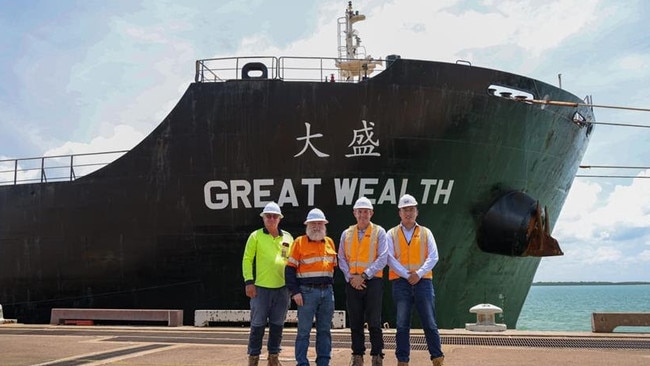Administrators move on Warrego revival mine
Administrators have moved on a Territory mine that only months ago sent its first shipment to Asia. Read what it is.

Business
Don't miss out on the headlines from Business. Followed categories will be added to My News.
A Northern Territory mine revival project has been placed into external administration months after exporting its first iron ore shipment to Asia.
Northern Iron Pty Ltd, operators of the Warrego mine rehabilitation project near Tennant Creek, was placed in liquidation on Saturday evening, April 12, with Darwin-based administrator Rodgers Reidy appointed.
Established in 2021, Northern Iron’s key development was the Warrego Rehabilitation Project, located 50km northwest of Tennant Creek.
Mining and Energy Minister Gerard Maley said the governnment was aware of “significant commercial issues” around the project.
“We understand Northern Iron was faced with significant commercial issues, and Government has previously met with the company to see what support could be provided,” Mr Maley said.
“This is a very disappointing outcome, and we will continue to remain in contact with the company during the transition to provide support where possible.
“I urge Northern Iron to do what it can to support its workforce during this transition”.
Operational since October 2024, the project aimed to reclaim low-grade iron ore from the historic Warrego mine stockpile and converting it into high-grade magnetite for export.
Magnetite is a highly magnetic and dense mineral which allows it to be effectively separated from other tailings material during processing through a combination of water and magnetism, to form a magnetite concentrate.

In January, Northern Iron dispatched its first shipment of 47,000 tonnes of so-called Northern Australia Magnetite Concentrate to Asian markets.
The project had an expected mine life of three-and-a-half years.
It was hoped the resource would contribute about $100m a year to the NT economy and produce about 3.8 million tonnes of magnetite for global markets.
Contacted by the NT News, Northern Iron managing director Rob Morrow said the decision to enter administration was “extremely disappointing” but declined to expand on the reasons behind the decision, the number of creditors or the level of debt.
The future of the company’s approximate 35 employees remains unclear.

“I’m not able to give any more details at the moment,” he said.
“The administrators and receivers are working through that. Obviously it’s still a reasonably attractive asset, but they’ll have to establish whether it can be traded forward or not.
“The next step will be worked through by the administrators. It’s extremely disappointing and it’s a tough time for all involved including the communities and support people around.
“The future of the project will be up to the administrators to determine.”
Minerals Council NT executive director Cathryn Tilmouth said the liquidation highlighted the need for infrastructure investment to support major resource projects.

“This is another reason why serious investment in infrastructure, like upgrades to the Tennant Creek airport, are so important, to give projects in the region a fighting chance at success,” Ms Tilmouth said.
“The lack of infrastructure increases the cost of logistics in the Territory and can be a significant deterrent to project investment and therefore prevents the benefits from the industry from reaching Territorians.”
Northern Iron had invested millions of dollars building a spurline from the Warrego mine site to the Alice Springs to Darwin railway.
The news of Northern Iron’s administration is a blow to Tennant Creek and the Territory, which had seen a mining revival in the Barkly town.
A number of economy-defining projects are currently underway around Tennant Creek including Tennant Mining’s Nobles Nob project, Castle Resources’ Rover 1 development and Tennant Minerals’ Bluebird and Babbler projects.
Warrego was once a stand-alone mining town with homes, a school and a swimming pool. The town died with the reduction in production in the late 1980s.





